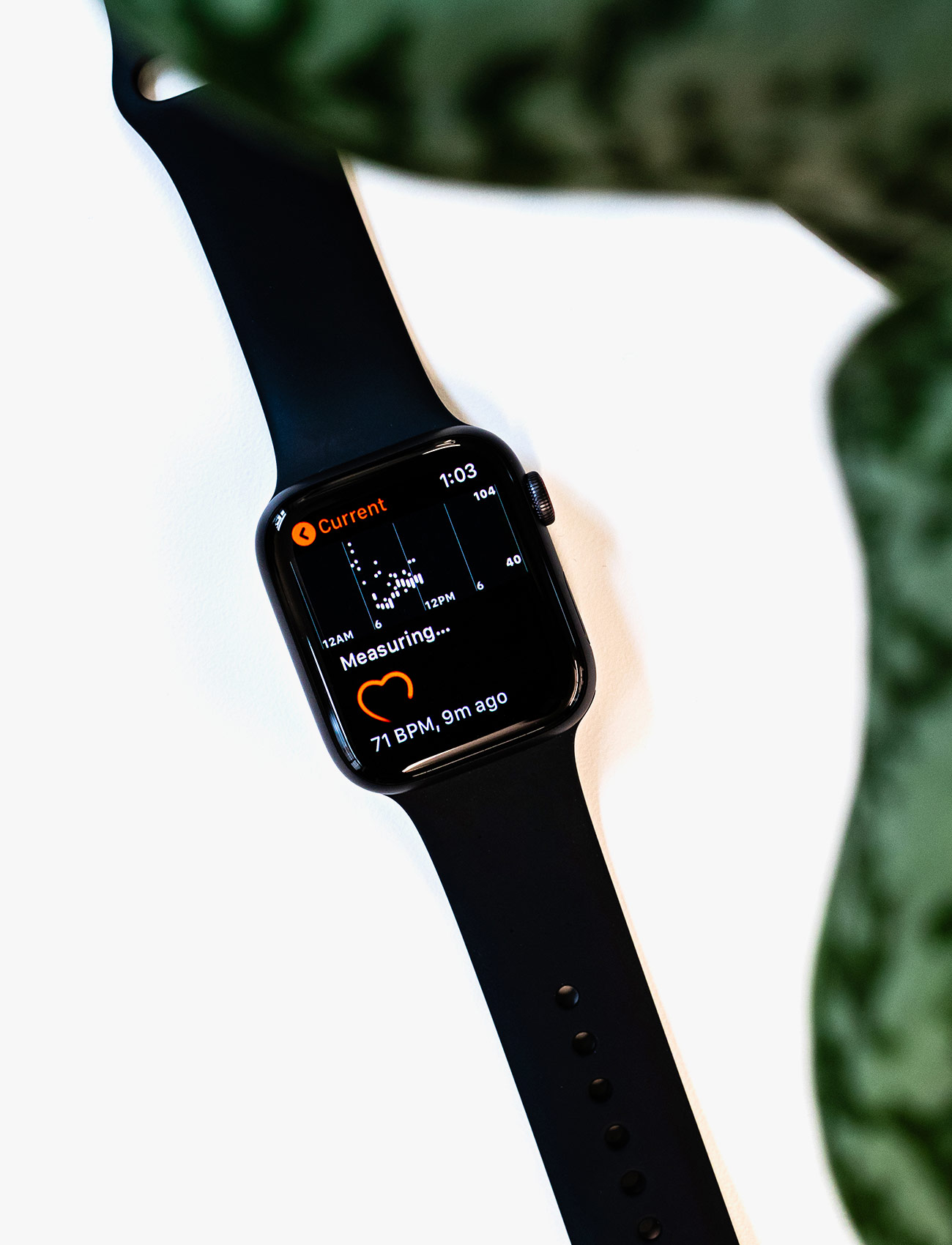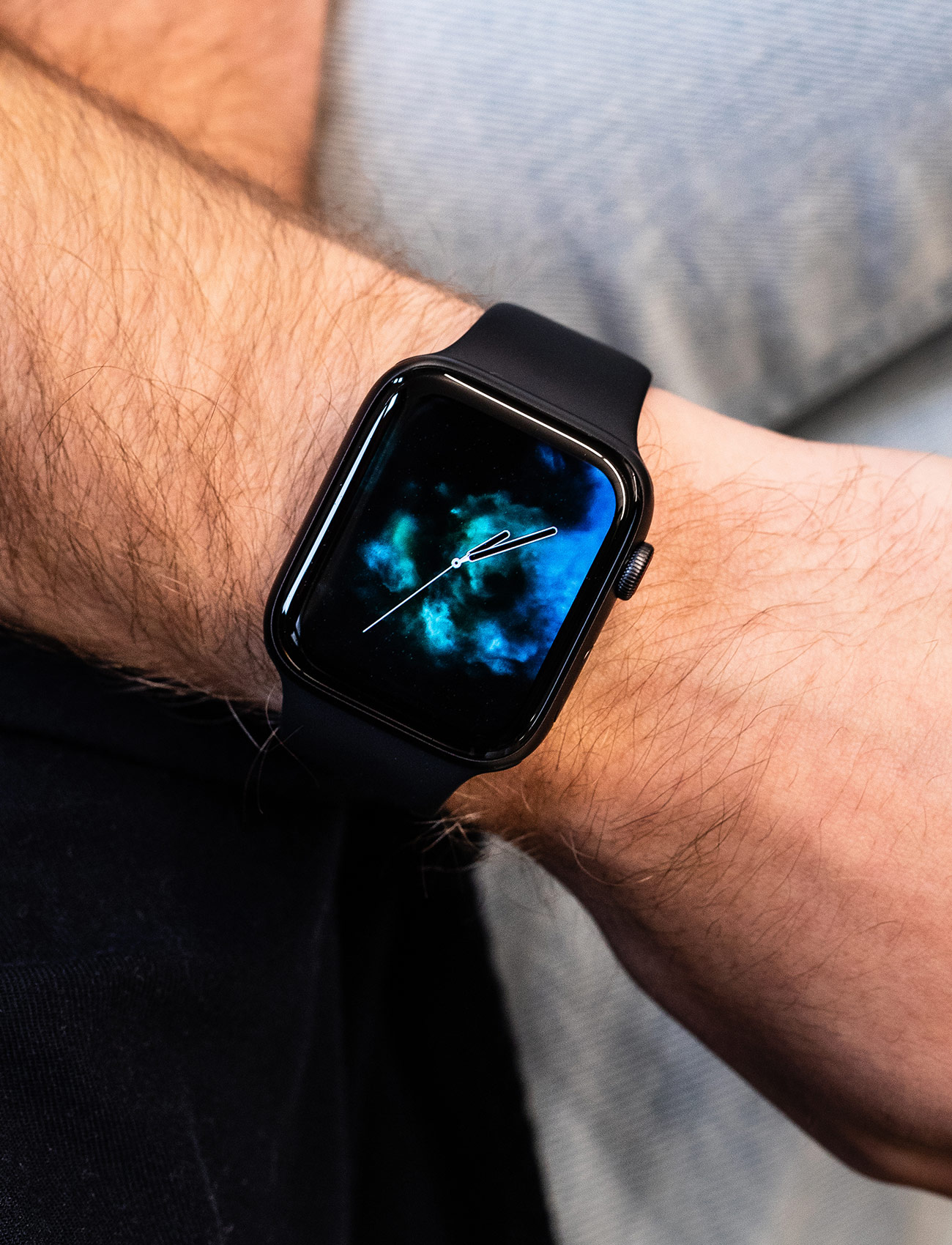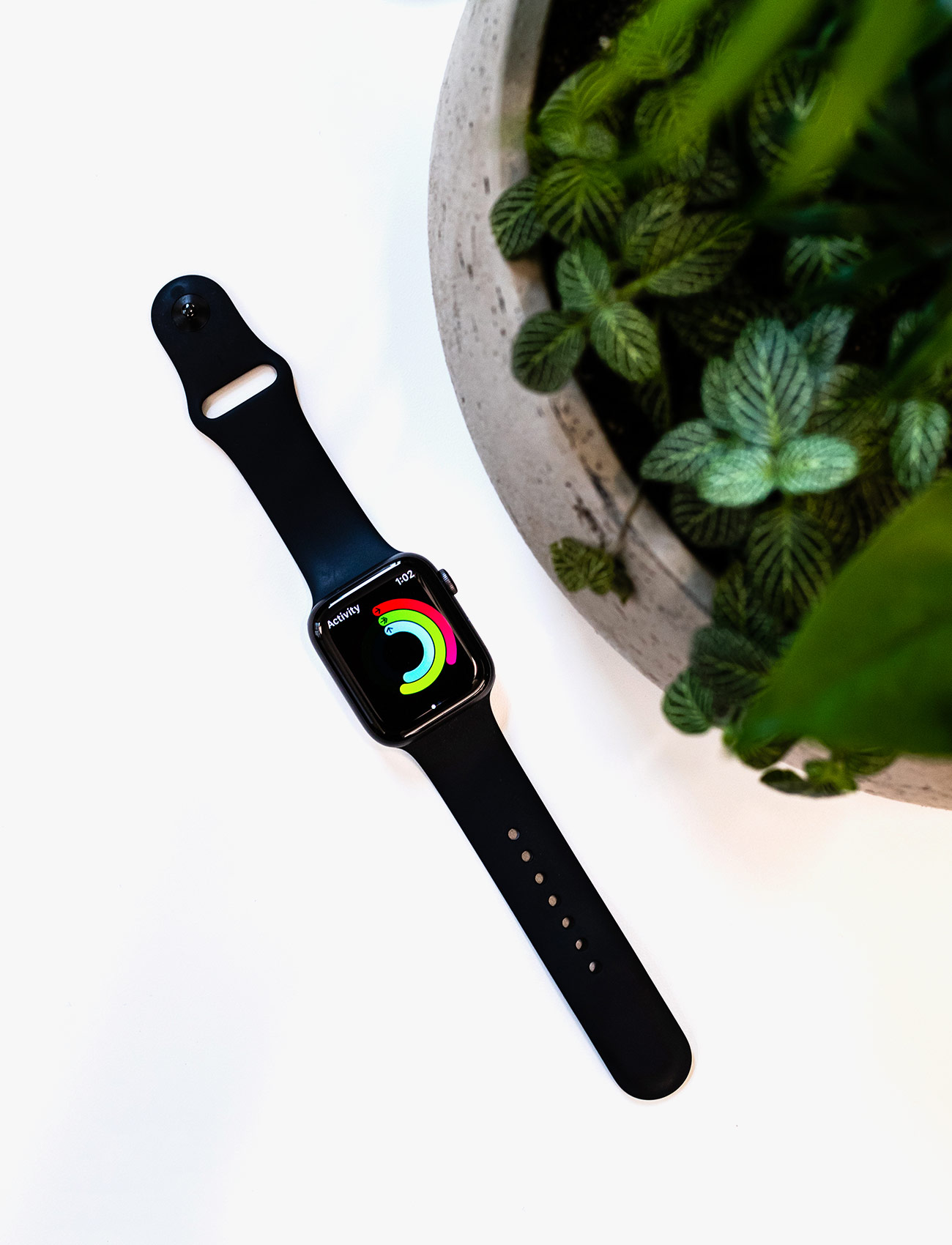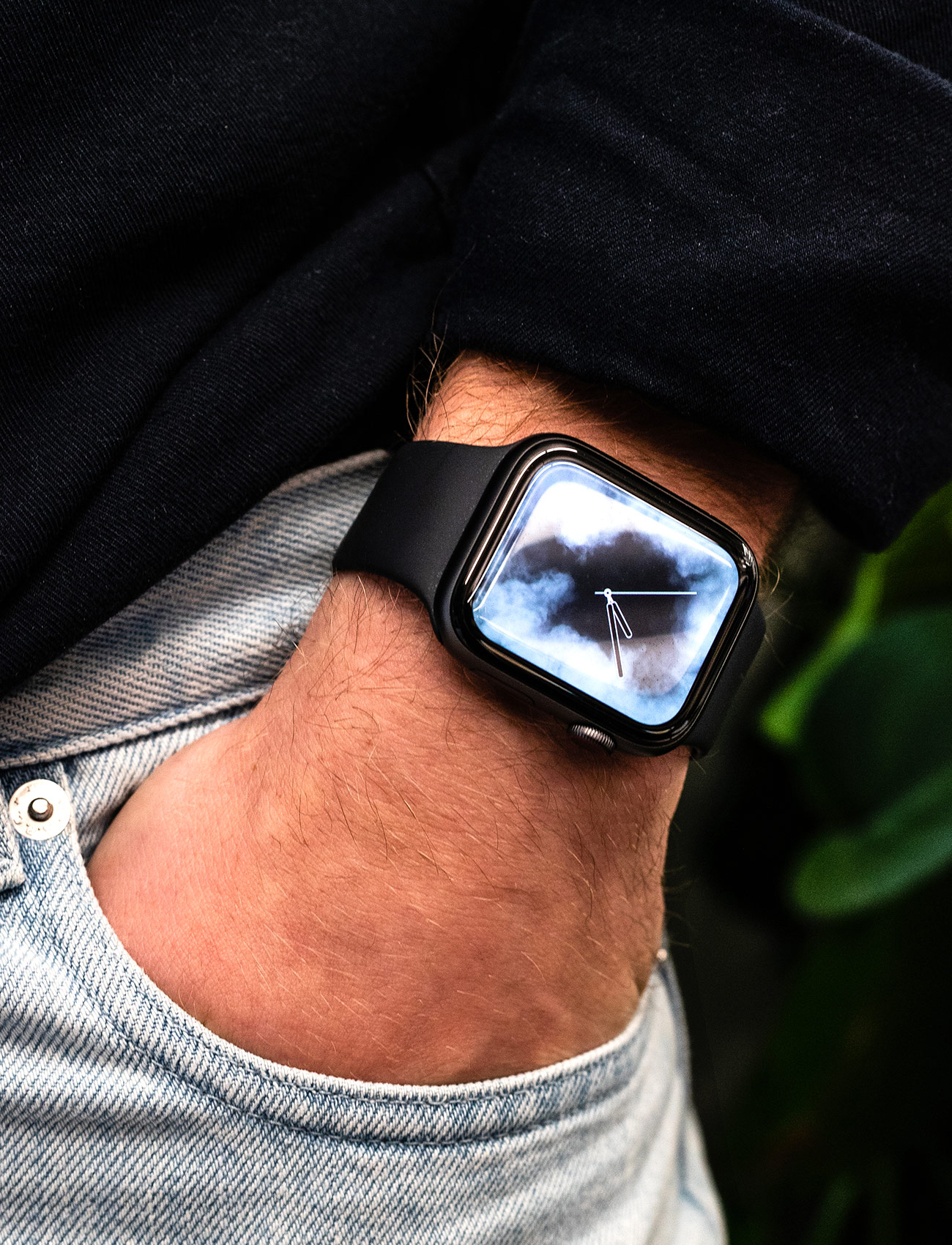Last year, the big upgrade Apple made to the Series 3 (now $279+) Apple Watch was the addition of LTE capability. Pay your cellular provider an extra $10-ish each month, and you could use cell data to receive calls, texts and emails, plus, stream Apple Music on your wrist – all without your iPhone nearby. There were other subtle upgrades (it was better fitness tracker and Siri could speak) but the design of the Series 3 was basically the same as the Series 2 (now defunct) and Series 1 before it. That changed with the Series 4 ($399+).
The Series 4 is the first Apple Watch to have a real hardware redesign (although it still has a square look and rounded edges like its predecessors). It has a 30-percent larger, edge-to-edge display. It has a snappy new processor and it comes in two new sizes, 40mm and 44mm, that are both noticeably thinner than the Series 3’s 38mm and 42mm sizes. The speakers, antennas (for cell reception) and fitness sensors have all been improved, too. And the solid red dot that was on the rotating crown of the Series 3, which indicated that it was an LTE model, is now a thin red circle on the Series 4.
There are two other features that make the Series 4 different. First, there’s fall detection. With the improved gyroscope and accelerometer, the Series 4 is able to distinguish between a real fall and a fake one, and if it detects a real fall it’ll ask you if you need help. It can call emergency services or an emergency contact (and it’ll also siren really loud).
The other new feature is that the Series 4 is the first Apple Watch to have an electrical heart sensor (ECG or EKG). Run the ECG app (FDA-approved) and place a finger on the watch’s crown, and Series 4 will be able to measure the electrical charges across your heart and thus will act as a basic test (but won’t replace an actual doctor and electrocardiogram) for potential cardiac problems. In the demo Apple did at its keynote this function looked really nice, but the EKG app and feature won’t be available until a software upcomes later this year (so I wasn’t able to test it.)
|

The Good: The Apple Series 4 is an all-around better version of Series 3, which had been the previous best smartwatch you could buy, meaning that the Series 4 is now, hands down, the best smartwatch you can buy. It’s an exceptionally good fitness tracker with all the sensors you’d want, including GPS and a heart-rate sensor. And for Apple Music subscribers, it’s great for running because you can listen to music with or without your iPhone nearby; you can download playlists on both the LTE and GPS models. The battery life is decent, lasting roughly 1.5 days, and you can initiate Siri without pressing any buttons; just say “Hey Siri” as you would with your iPhone (although this is a feature of WatchOS 5, not exclusively Series 4). The fall detection works surprising well and it’s pretty difficult to fool it. And the rotating crown has haptic feedback now, so you get a little buzz everytime you scroll between apps, which is nice.
Who It’s For: Anybody with a Series 1 or Series 2 Apple Watch should definitely consider upgrading. The difference in the display, speed and all-around functionality, not to mention battery life with the new WatchOS, is night-and-day compared to Apple Watches that are several years old. If you bought a Series 3 within the past year, you have a more difficult decision to make. The Series 4 is definitely better and has a “cool factor” that the Series 3 lacks, but you probably won’t notice that big of a difference.

Watch Out For: It’s expensive. The smallest (40mm) and cheapest Series 4 starts at $399, but if you want the larger model (44mm) that goes up to $429. And both of those are GPS-only models. If you want a Series 4 with LTE, that starts at $499. The ECG app and feature isn’t available yet. And even though the fall detection works well on the Series 4, I feel like it would be superfluous for most people.
Alternatives: The obvious alternative is the Apple Watch Series 3 ($279+), which is now considerably cheaper than the Series 4. It’s not as pretty or fast, but it’s still an excellent fitness tracker and all-around smartwatch.
Review: I’ve worn the Series 3 pretty extensively over the past year, testing it for a few months when it first came out (before moving on to test another smartwatch) and then taking it to Squaw Valley to see how it worked as a ski tracker. Heck, it’s my smartwatch of choice when I’m off the clock – I love it. That said, never in the past year has somebody come up to me and asked me about it, which I’m guessing is because it looked like any previous Apple Watch. Well, in the two weeks of testing the Series 4 I’ve had over a handful of people – including two strangers – ask me if they could look at it.
Even though the Series 4 is conspicuously different than the Series 3, it also, as I mentioned before, feels very much like an Apple Watch has in the past. It’s faster, yes. Its screen is prettier, yes. Its speaker louder and its connectivity is better, yes and yes. But none of those things change the way you interact with the Apple Watch every day that much. What I’m saying is that basically, after a few hours of using the Series 4, I kind of unconsciously forgot that I was wearing the new Apple Watch rather than the one that I was wearing for most of the past year.
I think part of the reason why the Series 4 and the Series 3 feel so similar is that I use them in basically the same ways. As a runner and an Apple Music subscriber, I can leave my iPhone at home and still listen to music. And I can answer calls, some iMessages and check notifications quickly, without having to reach for my iPhone. The new features that only the Series 4 can take advantage of, ECG monitoring and fall detection – I don’t think I’m the person to best utilize them. As 29-year old whose is healthy and works out, I’m not too concerned about my heart health. (Also, I couldn’t test it out if I wanted because the ECG app isn’t out yet.) And I’m not too concerned about falling and hurting myself.

The fall detection works impressively, though. To test it out, I laid a bunch of couch cushions on the ground and tried to fall as naturally as I could. If I did it well enough, I got the “It looks like you’ve taken a hard fall” alert. (For a more interesting demonstration, I suggest watching the Wall Street Journal‘s video, featuring some real-life stuntwomen.) However, I exercised with the Series 4 for two weeks and took it hiking when I was in Arizona for a destination wedding (fancy!) and I only triggered it once. And that one time was when I was watching a soccer game – I’m a big Liverpool FC fan – and one of our strikers missed an open goal, so I slammed the floor with my fists in frustration. My watch buzzed and asked me if I had fallen. LOL.
While neat, I don’t think the fall detection feature on the Series 4 is for typical Apple Watch wearers. It’d probably be a good alternative to Life Alert for elderly folks who live by themselves, but then there’s the issue of charging every day-and-a-half – and I can’t picture many grandparents I know doing that. That said, I do think fall detection could be a great feature for aggressive athletes or people who are constantly doing dangerous outdoor activities, like mountain biking or climbing. For most people, like me, however, I don’t think it’s something they’ll use very often.
The Series 4 does have a few other features that I found charming. The haptic feedback of the rotating crown, in particular, is nice because it makes scrolling and landing on the app you want easier and more accurate. To get the most out of the new haptic feedback, however, you should probably switch the app layout from the default honeycomb grid to a list view. And you can do this by going to the Home screen and long-press on the honeycomb app layout.
Apple’s new motion-graphic watch face, which was designed specifically for the Series 4, is pretty too; it makes the watch look like it’s on fire or that you’re staring into a well of antiquity. (Also interesting watching the video of how Apple made this watch face, here.)

Verdict: The Series 4 is the best smartwatch ever. That’s clear to me. Its main problem is that last year’s Series 3 is also still so damn good. (And now it’s relatively cheap, too.) Because of that, most people who own a Series 3 won’t notice that much of a difference between their current Apple Watch and the new Series 4 – besides its fancy display and new slender design, of course. There’s also the issue that Series 4’s most hyped new features, fall detection and ECG, won’t impact how the majority of Apple Watch users use it; Apple has clearly targeted the older generation here, making the Apple Watch more universal, which is great but ultimately it didn’t affect my experience much. The Series 4 is wonderful, beautiful and easy upgrade for anybody with an Apple Watch Series 2 or older, but the conundrum comes for those who currently have a Series 3. $399+ isn’t super cheap, after all.
What Others Are Saying:
• “Still, the new Apple Watch is perhaps one of the most significant developments in wearable gadgets in years. People with heart problems can easily use the EKG app to take electrocardiograms whenever they sense something abnormal, without the rigmarole I went through. And the data can be shared immediately with their doctor, which could open a conversation about next steps, like going in for a visit or modifying treatment. For everyone else who doesn’t have a confirmed heart condition, this feature will not immediately be a selling point.” — Brian X. Chen, The New York Times
• “The Series 4 feels like it has been through a needed maturation process, with refinements to the screen, the battery, the cellular connectivity and more. And its new potentially lifesaving EKG and fall-detection features make it desirable for people who might well remember the Eisenhower administration.” — Joanna Stern, Wall Street Journal
• “The Series 4 displays take up so much more of the face of the watches that the new 40mm watch’s display is larger than the display on the old 42 mm models — the new small watch has a larger display than the old large watch..” — John Gruber, Daring Fireball
Key Specs
Size: 40mm or 44mm
Chip: W3 Apple wireless chip
Sensors: barometric altimeter, gyroscope, accelerometer, optical and electical heart sensors
OS: watchOS 5
Connectivity: Bluetooth 5.0
Battery: Up to 18 hours
Water resistant: 50 meters
|




